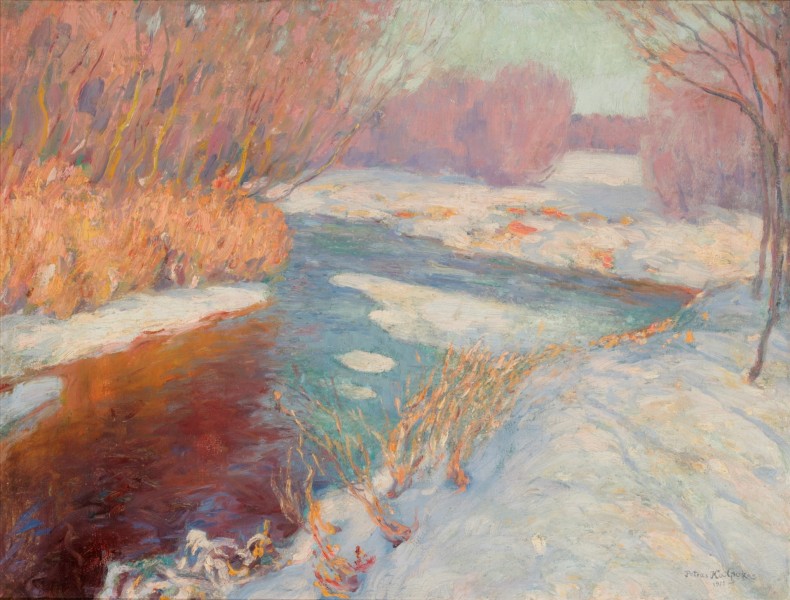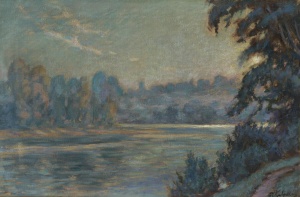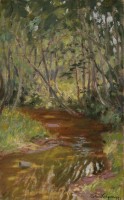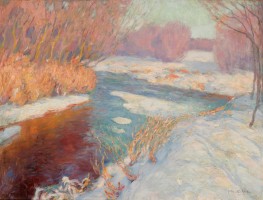

Rivulet in winter
| Author: |
Petras Kalpokas (1880–1945)  |
| Created: | 1911 |
| Material: | canvas |
| Technique: | oil |
| Dimensions: | 43 × 55.50 cm |
| Signature: | bottom right: Petras Kalpokas / 1911 |
In 1907, at the beginning of his artistic career, P. Kalpokas found the rivulet to be a symbol of impermanence, and often resorted to it as he searched for the nuances of the mood. The artist painted many winter and springtime rivulets, and as in the language of lyrics, they always meant perennial life and the motion of nature. One of his first painted rivulets was displayed at the Secession exhibition in Munich and published in the contemporary German press. Most often P. Kalpokas painted winter scenes and disobedient, cold-resistant rivulets. The range of warm colours in such pictures foretells the coming of the spring.
Source: Law firm Valiunas Ellex art album THE WORLD OF LANDSCAPES I (2010). Text authors Nijolė Tumėnienė, Dalia TarandaitėExpositions: "A Glance at the History of Lithuanian Art from Užupis", 30 August 2018 – 1 June 2019, Lithuanian Art Centre TARTLE (Užupio St. 40, Vilnius). Curator Giedrė Jankevičiūtė. "Petras Kalpokas (1880–1945) and Environment", 20 June – 14 November 2020, M. K. ČiurlionisNational Museum of Art. Curator of the exhibition Nijolė Tumėnienė.









